by Venchito Tampon Jr | Last Updated on June 28, 2023
What is a contextual link?
Here’s a good definition from Jason Acidre:
A contextual link is a type of link that’s usually found within the body of content and is in context with the idea surrounding the link. It can be both natural (voluntary links from other websites – ex: link bait) and artificial (manually built – ex: one of your guest posts that links back to your blog/content).
Building contextual links can benefit you in so many ways, which include:
Targeted traffic. Leads. Online brand presence.
They are all good, but they only seem ” too good to be true” if you don’t know the exact how-tos of building the right contextual links.
Today, I want to give you 7 ways to get contextual links for your website.
How to Build Contextual Links?
1. Maximize Targeted Outreach
Targeted outreach is basically sending out emails to prospect linkers of a very specific content – most are existing articles with the same topic, with a hope to get reference links back to the site.
Let’s say you have published a post on “how to stop my husband from snoring”. If you want to get contextual links, you may reach out to articles that rank for terms like, “how to stop snoring”, “how to stop snoring of your partner”, or even “top snoring apps”.
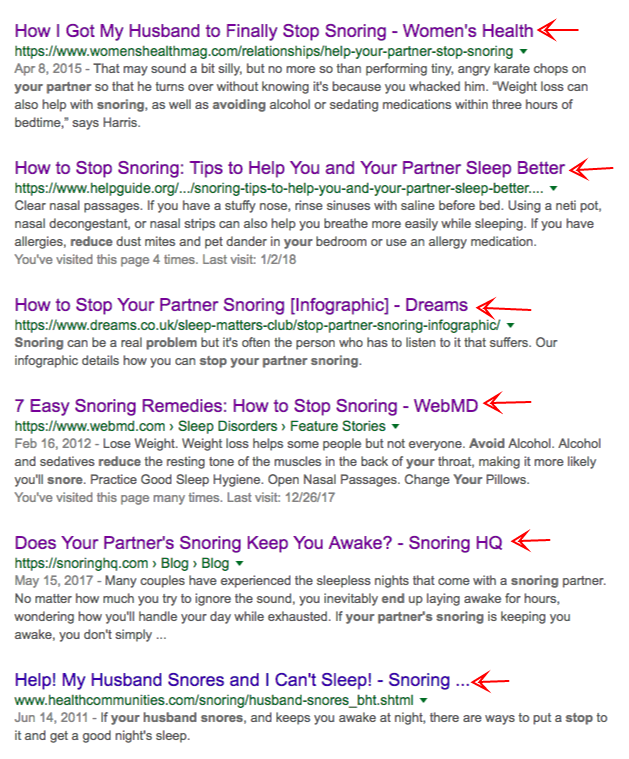
Because they’ll find your article to be relevant to use as an additional resource (i.e. including your content on “you may also check out this article on” or “for further reading”), there’s a good chance you’ll acquire a link.
But it’s not a guarantee that it works all the time. You have to understand the context of the linking page and your content, so you can determine if there’s a good linking chance.
Here are some tips to guide you when assessing these link opportunities:
First, check the primary focus topic of the article/page.
Ask yourself, “Does the prospect article I’m trying to get a link from cover a much larger subject compared to the topic of the content I’m pitching with?”.
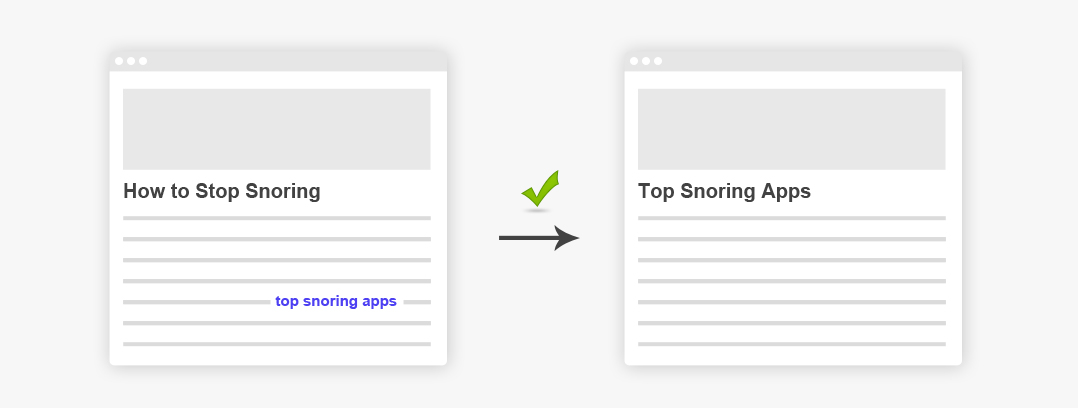
If you are pitching your “top snoring apps” to an article about generic “how to stop snoring” content, there’s a good chance to get a link from that because the linking page covers a wider subject and perhaps has a subsection about snoring apps – which then provides you an opportunity now for a link.
But how about if it’s vice versa? “how to stop snoring” to “top snoring apps,” would you get a link?
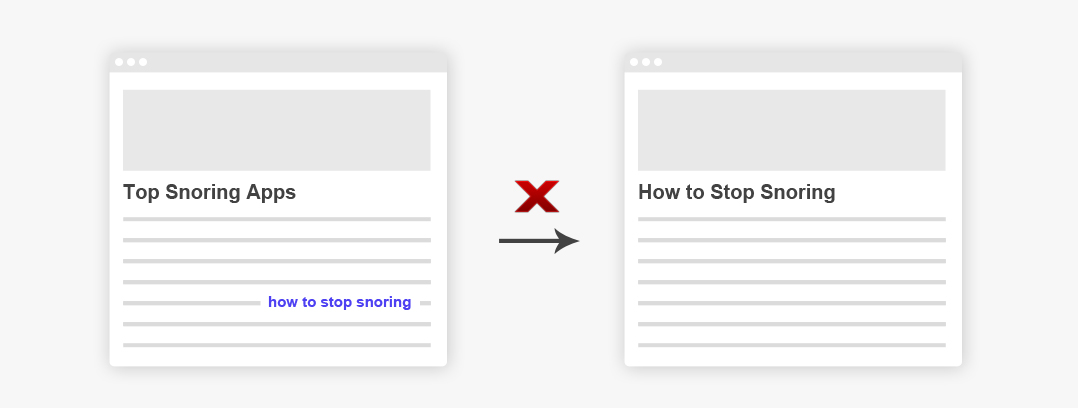
The answer is, “it depends.”
Depending on how the article is structured, if the article covers exactly “top snoring apps” and your page isn’t about apps, there’ll be misalignment on his part to link to you. But it’s not always the case.
If your article discusses a subsection on snoring apps that haven’t been discussed/included in the prospect existing article, there’s a good chance you’ll get an external backlink.
The logic is that the blogger would want to give a reference link to a page that explains more about a topic/word/phrase mentioned in his article but have yet to be expounded.
Second, you need to assess external links on a page.
If you see a homepage link on an article referencing a product/service, not as a recommendation, just like brand mention (see example below) or a product review that links built to a commercial page, there’s a less organic linking chance to it.
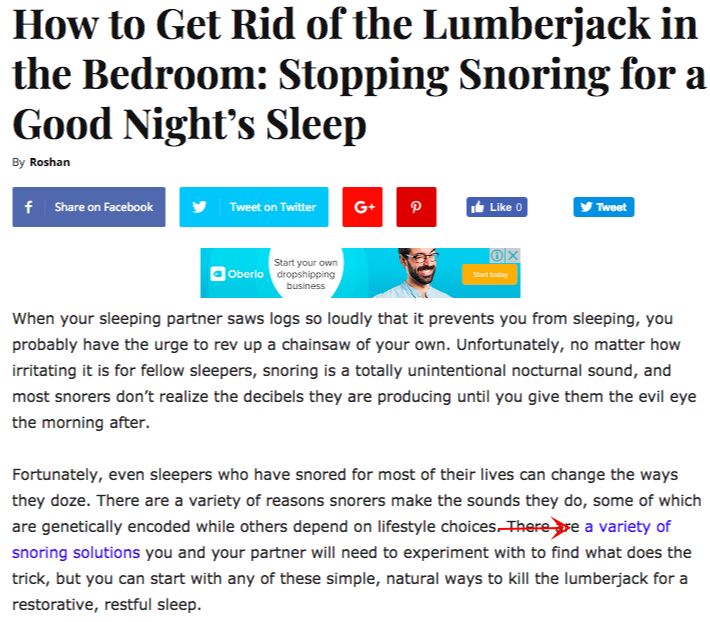
The reason there’s a link there is either the webmaster/blogger is affiliated, partnered, or is compensated for the effort of linking, or simply, the product/service is an authority in the space – undoubtedly being linked to in most blogs.
The third thing is to identify if the page is dynamic or static.

What I mean by dynamic is some pages frequently update over time, and other pages are not. Those pages that require updates of links are dynamic.
If you’re reaching out to a dynamic page, there’s a high probability to acquire a high authority link, as the need itself looks for new resources or references. In other words, they’ll be linking to your content if it improves their content piece.
For example, a blog post on snoring apps for 2017 can be dynamic if its URL isn’t targeting the snoring apps 2017 phrase. If it’s just snoring apps resource articles, it allows new links to resources.
The more dynamic the existing page is, the more likely you’ll get a link juice. Otherwise, if it’s static, they should have reasons to link other than the topic’s timeliness.
So, there are three ways to check if an existing article/page can link to you.
Second tip:
2. Generate Easy Links From Relatively New and Low Authority Publications
You aim for links from DA30+ blogs, but from sites with lower metrics (<DA30), you probably don’t.
Not pitching low-authority sites is kind of short-sighted thinking.
If you aim for traffic and clicks from links, there are low-authority sites with upward trends in organic growth that you should be getting because they increase the value of links when you get them.
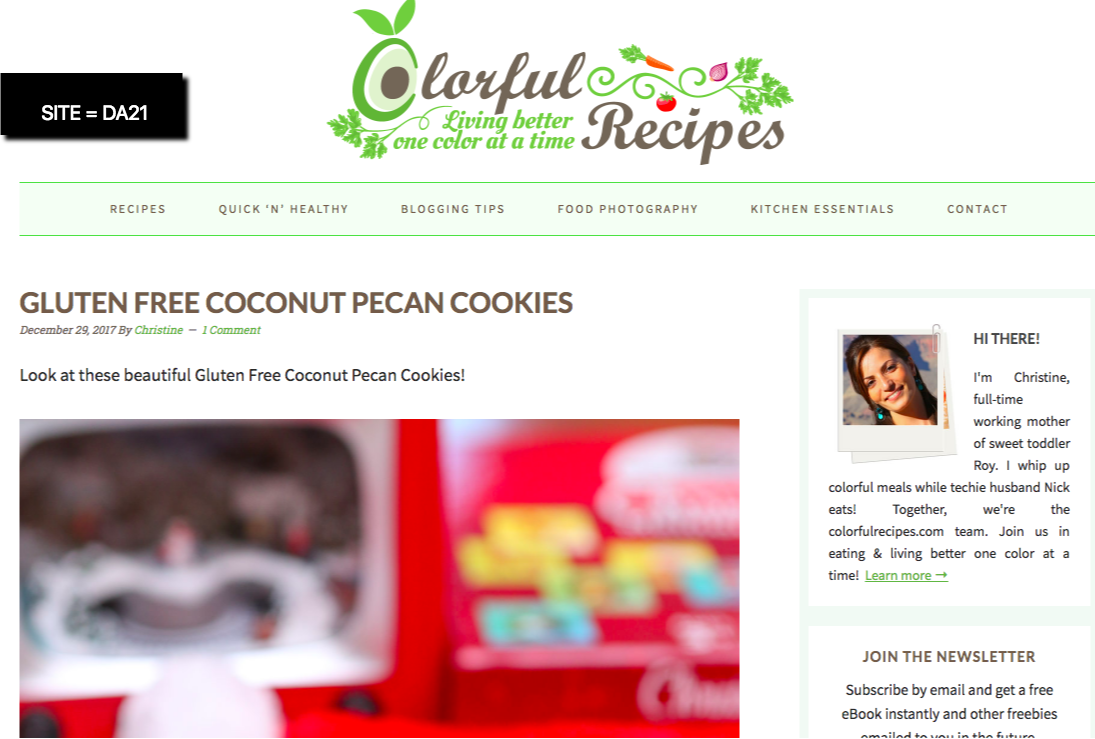
More importantly, if these blogs are still new in the industry (use archive.org to check), you’ll find that after a few months or years, they’ll have increased their followers and linkers.
Thus, if you have built relationships with them upfront, it will not be difficult to convince them for you to contribute posts on their blogs.
Note: If you have an authority brand, you should aim for top-tier industry blogs. But if you’re starting to grow your link profile, pursuing even low-authority blogs can be effective.
To check if a low authority blog is worthy of your link efforts, you can use Ahrefs or SEMRush to check the site’s estimated organic traffic.
The slope of the organic traffic trend signals the site’s growth. The steeper the slope upward, the better.
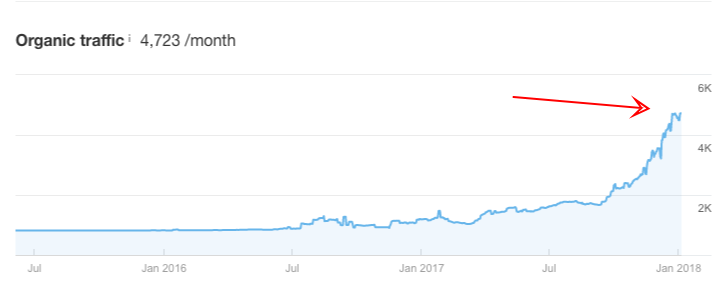
Once identified if a low authority blog is link-worthy, you’ll reach out to them with whatever offer you have – either a content asset worthy of a link or a visual asset ready to be republished.
3. Evaluate Similar Page Links for Homepage Ask
You probably heard that tip from Ross if you religiously consume content from SiegeMedia.
In my experience, that’s one way to assess your chance of getting the link.
If there are commercial links (i.e., one link pointing to a product page) on a page, you can get a homepage or commercial link.
The history of linking to similar page types is one true sign of a possible link.
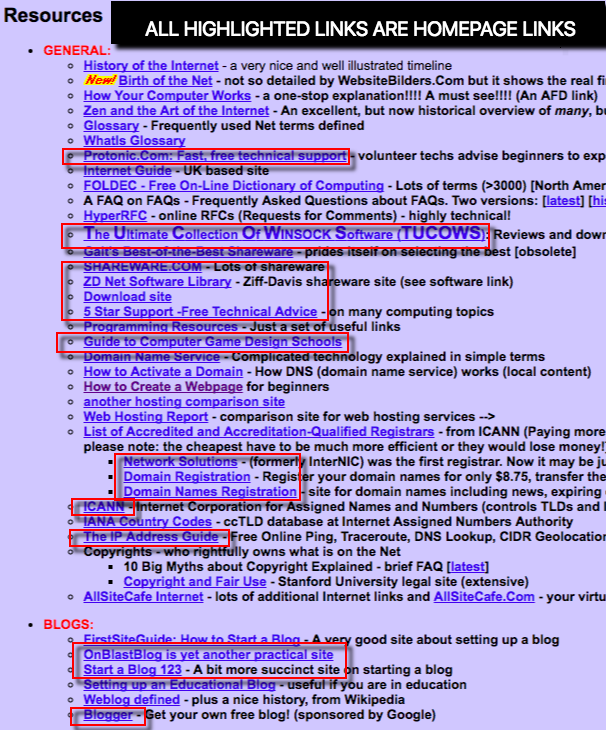
However, that’s not to say that it is always a guarantee. Proper assessment lets you know if a homepage ask is worth pursuable.
Here are some true signs of a potential homepage link:
- Keyword-optimized anchor text – very few you’ll find a link with the exact target keyword/phrase as the anchor text. So seeing one (except for Exact-match-domains where brand names are exact ranking keywords) is an intent to link to a commercial page.
- List of partners – you normally see this in eCommerce; retailers, manufacturers, suppliers, and other business partner types are mostly homepage as linked pages.
- Recommended products/services – top X tools in 2018 is one example where the homepage ask is feasible
Even if you’ve got a great content piece published recently, if you think a homepage would be the best fit, that’s something you should pursue to be linked to. The opportunity cost is high if it’s not, given that a homepage link is way more difficult to acquire than top-of-the-funnel pages like industry guides.
4. Link Exchange Exclusively For Linkable Assets
When you have a great linkable environment, you’ll start receiving emails from other bloggers or webmasters wanting to get their links to their own sites.

Every month, three or five asks of this kind is a good opportunity to link exchange.
Depending on the cases, you’ll find it okay to link exchange for both linkable assets exclusively.
It’s natural to find a page that references good content, and a web page from another site links to your good content.
Here, you don’t get links mutually to the same pages (page A to page B, page B to page A). That’s a 2008 link exchange. Rather, your content A gets a link from his page A, and his content B is linked to your page C.
Below are more tips to guide you with this tactic:
A. Check if the linking partner is a good fit.
You will receive different emails of an ask-to-link (link exchange): some pitches include direct links to their preferred pages/content, while others don’t.
If the email is handcrafted well (with your name personalized), it’s a sign of a good linking fit.
However, some emails start with Dear Ma’am/Sir but still have a good relevant content piece. The person reaching out just doesn’t know how to outreach properly.
So, always check the email and the website they have. Assess if the page or website itself is semantically fit for your brand.
B. Assess their preferred linking page.
If it’s a content page, they’re building links to it. It’s a potential fit.
Otherwise, for commercial pages, consider if the product/service could be highly recommended on your website.
As Ross Hudgens says, “Building natural links to landing pages with commerciality built in is pretty close to impossible with cold outreach.”
C. Identify which page you could put their link.
Unless you’re willing to put a new page/article to give them a link, you could simply search for an existing page on your own website that best fits them.
If you have a recommended readings page, that’s one choice you can pick, as you can simply include a link to their content if there’s a section that fits their topic.
D. Check if you could also get a link.
I suggest you choose one page that you’d like to improve keyword rankings visibility by getting more links to. Then by doing a site search on Google for their domain, site:hisdomain.com “topic”, check if they have a page that fits the topic.
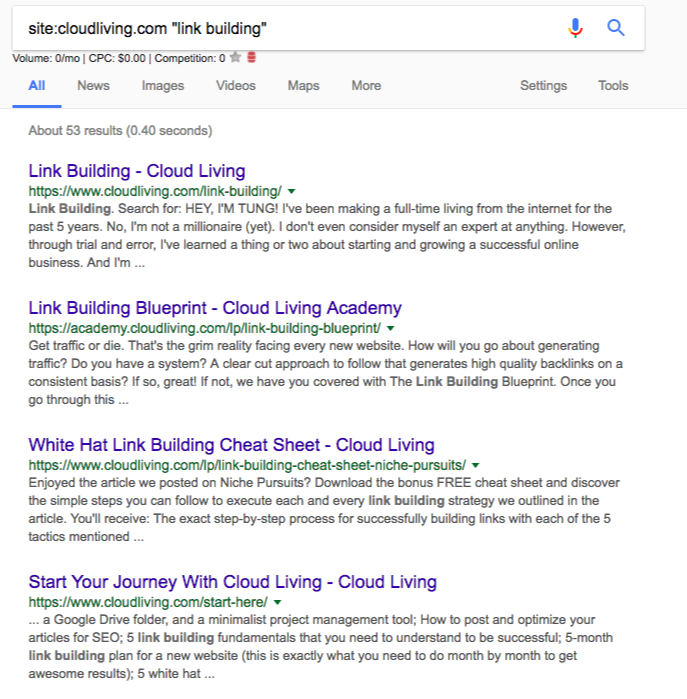
Once you start attracting potential linkers, link exchange exclusively for linkable assets can be a low-hanging fruit tactic that can add new links to your website,
5. Use Twitter to Nudge Bloggers About Broken Links
Perhaps you’ve found broken links on a target resource page, and you thought, “Maybe I could tell this to the webmaster to connect easily, hoping to get a link”.
So you easily go to your outreach tool and craft an email to the webmaster with the note, “I’ve found errors on your page”.
He doesn’t respond, so you send a follow-up.
Nothing happens, so you proceed to your next outreach prospect.
This is an opportunity cost.
No response doesn’t mean there’s a huge problem with your link prospecting and outreach approach. There may just be a little tweak needed to connect to your outreach prospect properly.
How about sending a direct message on Twitter to connect?
Most bloggers are active on social because they care about their community (their followers) and consistently curate industry posts through social posting.
For that reason, if you send a direct message to a blogger about their broken links, there’s a high chance you’ll get noticed.
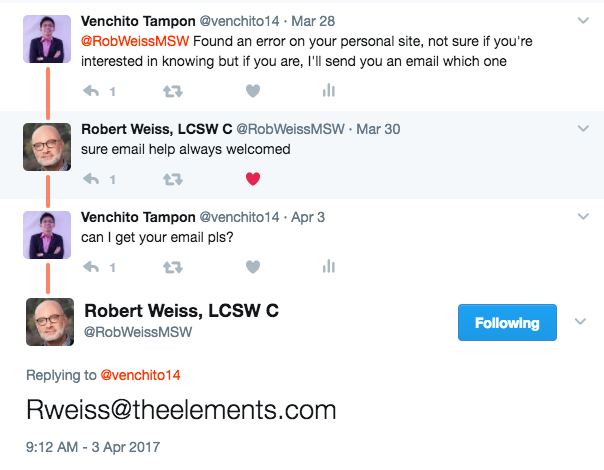
The methodology isn’t perfect, but it could make you stand out in a world of really basic, boring email templates, even a messy BLB pitch like this one:
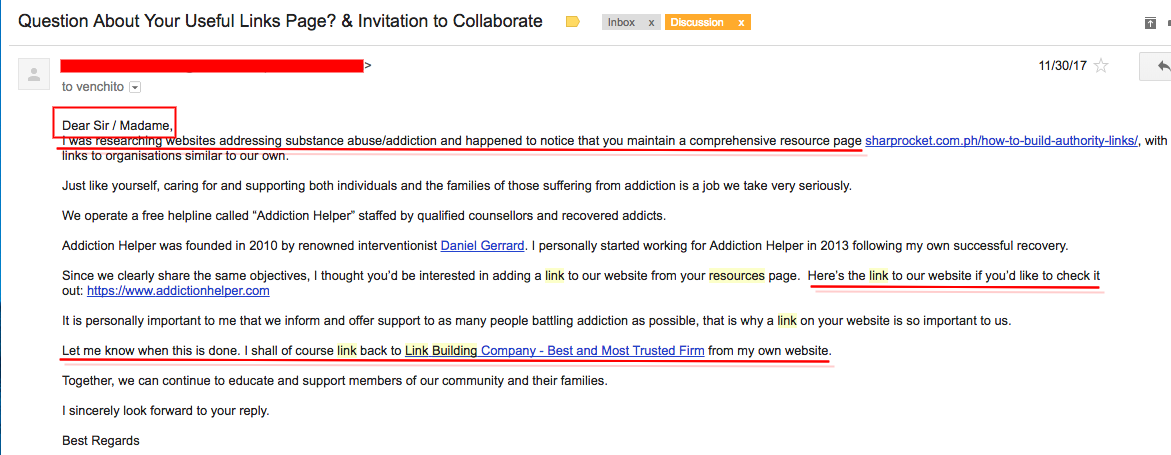
Once you’ve connected on social media, you can stay in the medium for the conversation or redirect messaging to email. The latter best works if you’ve asked the person about his personal email.
6. Find Industry Link Roundup Terms to Increase Conversion Rates
Right when you search “contextual link building” or “contextual links”, you’ll find articles on the first page of search engine results pages that say, “get links from link roundups.”
You know the tactic has been written several times in many SEO articles, so you know how the process works.
Step 1: Use search operator, “link roundup” “INDUSTRY” or “roundup” “weekly” OR “monthly” “INDUSTRY” to find industry-specific link roundup opportunities.
Step 2: Create a list of blogs with link roundups and find contact emails of webmasters.
Step 3: Reach out to them with an email template that says, “I’ve found your “ROUNDUP NAME” .. and thought you might be interested to see this recently published on TOPIC — <insert your link to the post>” or anything similar to that.
It’s an effective tactic, but not everyone can get results from it immediately.
What’s missing in this tactic is optimizing prospecting for industries with little-to-no outreach markets for this rare link target.
What do I mean?
Not all link roundups have titles of “best links of week/day/month” or “industry link roundup“, most of you would discover that sites named their roundup series with weird names, i.e. “blog party,” “link party,” or “blog hop.”
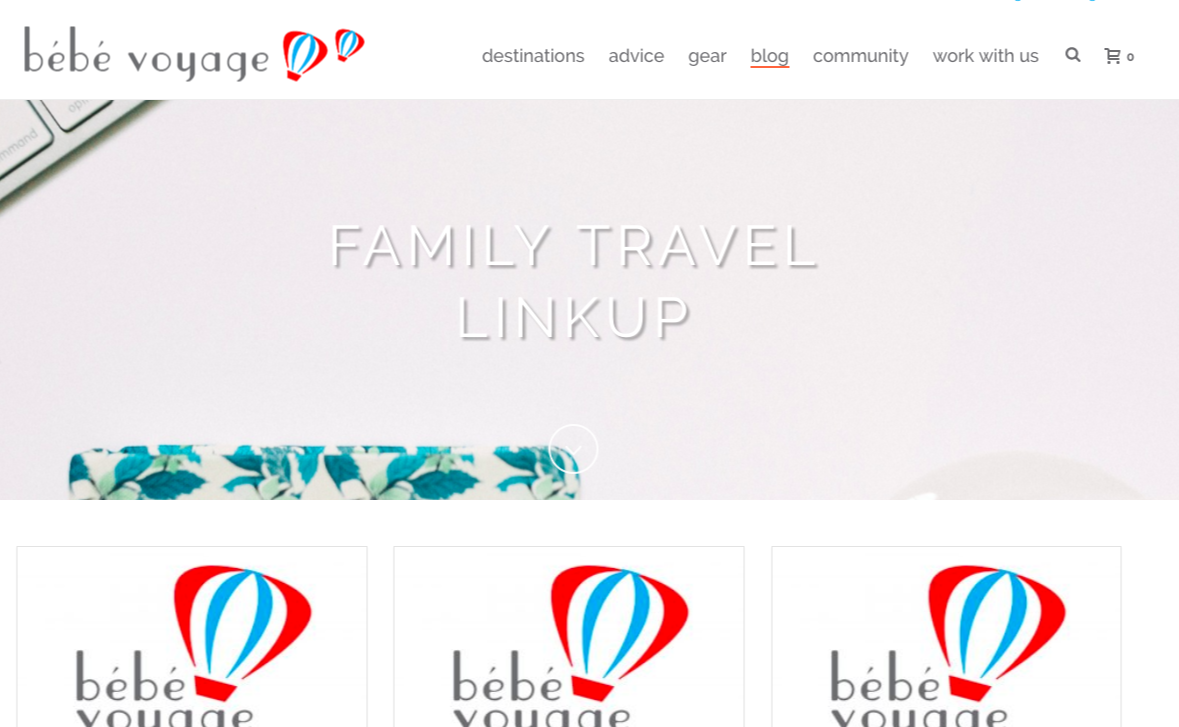
They may sound black hat 2008, but these are the terms bloggers use about “link roundups.”
So, how do you find exact link roundup titles in your industry?
I recommend you start identifying an authoritative industry blog (one with DA60+) that publishes regular high-quality content pieces.
For example, if you’re in the wine industry, one popular wine blog that consistently produces high-quality content is WineFolly.
They publish a diversity of content assets – from 10x guides to visuals, and they do it regularly.
You will see this post on pairing wine and cheese by checking their top content of all time (top content with the highest number of social shares, not by # of links). Take a deeper look at its referring internal link. You can immediately see roundup links, including this roundup post – GrapeCollective Wine News.
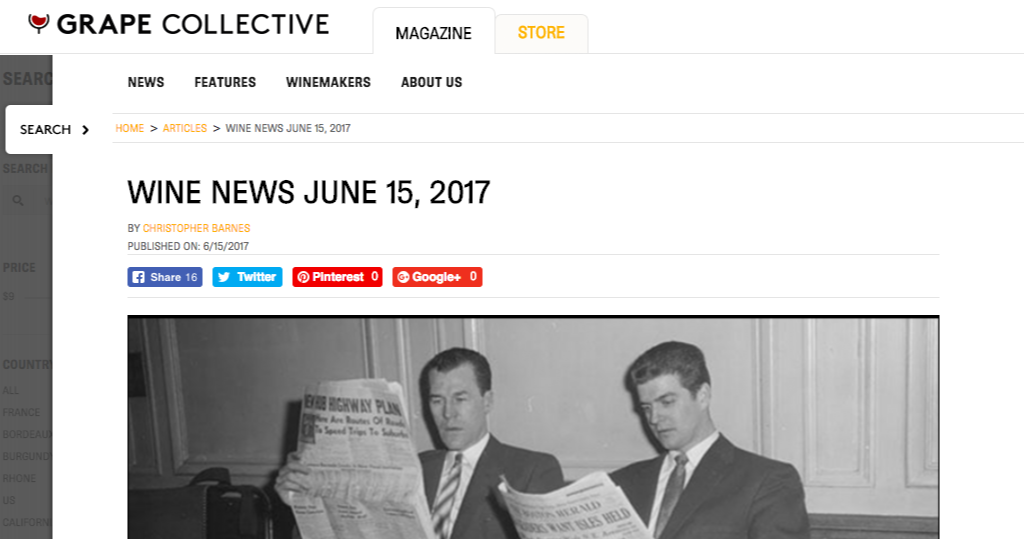
Dig into other top content’s links, and you’ll find more roundup links like Grape Wall Daily.
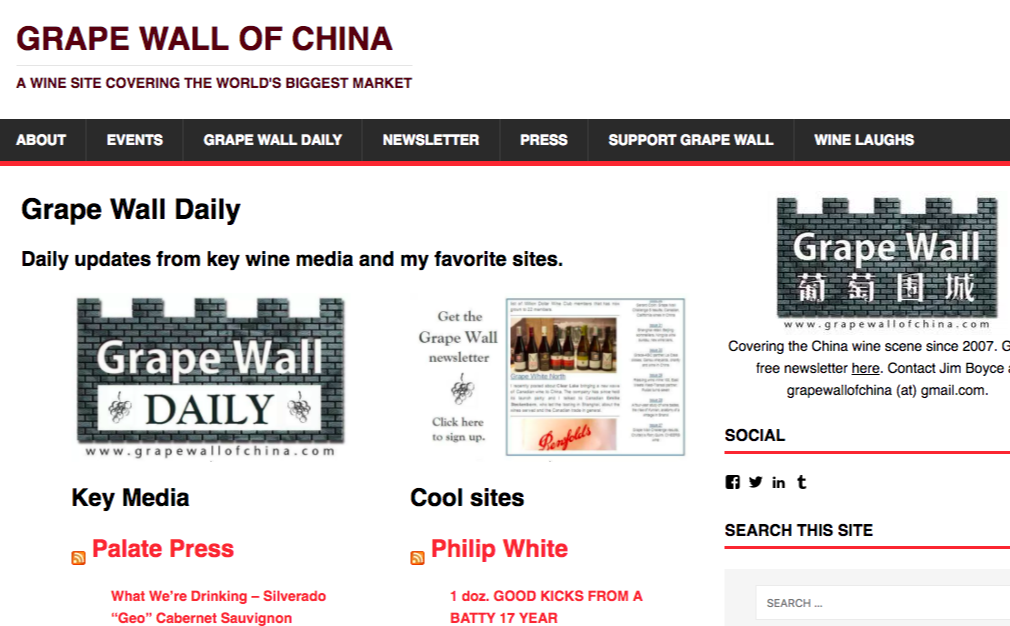
You understand the pattern. Find a top industry blog that produces high-quality content pieces. Check the site’s top pages based on social shares (you can use Ahref’s top content feature, not top pages). Check if the most-shared content has gained roundup links. If yes, grab those link opportunities and gather more link round targets by reverse engineering the site’s other content pieces.
7. Invite Contributors Using Different Offers
It has been proven repeatedly that getting contributors for your blog can help increase the number of referring domains.
For example, Joshua Dorkin grew his real estate blog – BiggerPockets– by creating high-quality content pieces from regular contributors.
That strategy allows his blog to become one of the real estate authorities today.
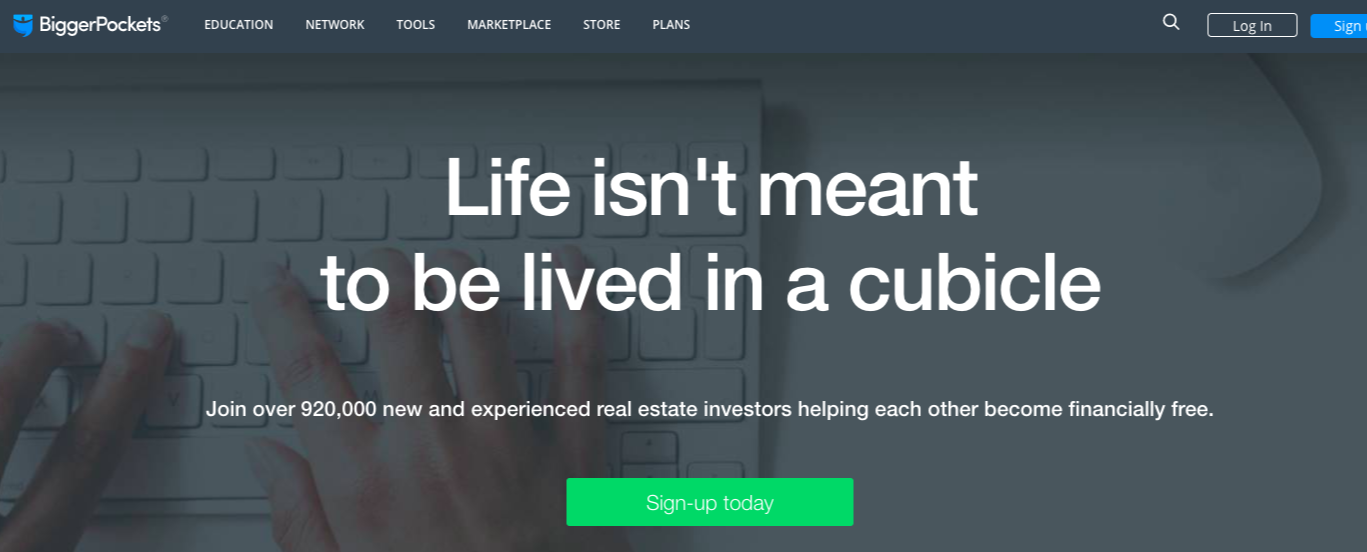
In his comment at Kaiserthesage’s blog, he said that he gets 30+ contributors to write for BiggerPockets weekly while he ensures that they put out 2-3 good pieces of content through his content marketing team.
Today, BiggerPockets for sure has more blog contributors. Maybe double, triple, or 10x their site traffic because of that strategy.
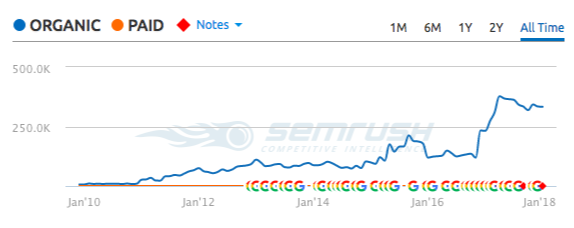
That’s just for one industry, but other niches with massive blog communities have gained more exposure and links simply by getting regular blog contributors.
Getting started with inviting contributors is easy. You email potential contributors and ask if they’re interested in writing for you.
The hardest part is getting them onboard.
If you can answer “what’s in it for me” for bloggers, you’ll have a high chance of enticing them to become your regular contributors.
Below are some valuable offers to make for bloggers:
- Increased exposure to the blog through the additional social following, email subs, and referral traffic. Got a DA45+ blog? Reach out to new bloggers (DA20 or less). This is more realistic than pitching top authority bloggers like Brian Dean’s blog (DA70+ blog).
- Premium product subscription. I wrote for Ahrefs in 2013 in exchange for a monthly standard subscription plan for their product. This works for your niche, too, if you have a great product to offer.
- Content collaboration. Less work for the blogger. Gets more credibility for both parties if both of your blogs have an immense following on social and emails.
- Compensation. The best is to target part-time bloggers. They charge cheaper than full-time ones. One tip is to check if their about/media/press/hire-me page. They won’t go cheaper than that if they include a $ per article/hour rate.
- Relationships. This matters most if you want to bait bloggers to write for you. There is no need for additional offers, as they would write for your blog.
Once you have invited bloggers to write for your blog, you may constantly check new bloggers in your industry you can potentially reach out to be added to your contributors’ list.

So those are 7 ways to build contextual backlinks to your website.
If you don’t have the time or inclination to do them, you should probably find someone who can. Learn more about our link building service.
Contextual Links Frequently Asked Questions
So those are 7 ways to build contextual backlinks to your website.
What is an example of a contextual link?
An example of a contextual link is when a blog post about red apples mentions other types of apples, like green apples. Contextual links connect related content to provide additional information and enhance the user experience. These links contribute to a more comprehensive understanding of the topic. By creating contextual links, website owners can improve the relevance and authority of their content.
What are the different types of contextual links?
The three primary types of contextual links are external links, internal links, and reciprocal links. While implementing contextual linking can be challenging, it yields significant value when executed effectively.
What are contextual and formal links?
Contextual features refer to elements of language that exist beyond physical manifestations, whether in the real world or the minds of individuals. Texts are segments of language that are treated formally, and cohesive devices are formal connections between sentences and clauses. Contextual and formal links serve to establish meaning and coherence in language.
The Author
Venchito Tampon Jr
Venchito Tampon is a Filipino Motivational Speaker, Corporate Trainer, and a Leadership Speaker in the Philippines. He is the CEO and Co-Founder of SharpRocket, a link building agency. With a decade of experience, Venchito has a proven track record of leading hundreds of successful SEO (link builidng) campaigns across competitive industries like finance, B2B, legal, and SaaS. His expert advice as a link building expert has been featured in renowned publications such as Semrush, Ahrefs, Huffington Post and Forbes. He is also an international SEO spoken and has delivered talks in SEO Zraz, Asia Pacific Affiliate Summit in Singapore, and Search Marketing Summit in Sydney, Australia. Check out his other businesses, Hills & Valleys Cafe, Blend N Sips and Saas Pursuit.
How our LINK BUILDING AGENCY builds 250 links/mo consistently using Predictable Link Building Methodology™…
- Using a SIMPLE and PROVEN system
- Using a SCALABLE strategy
- No private blog networks
- No creepy outreach emails
